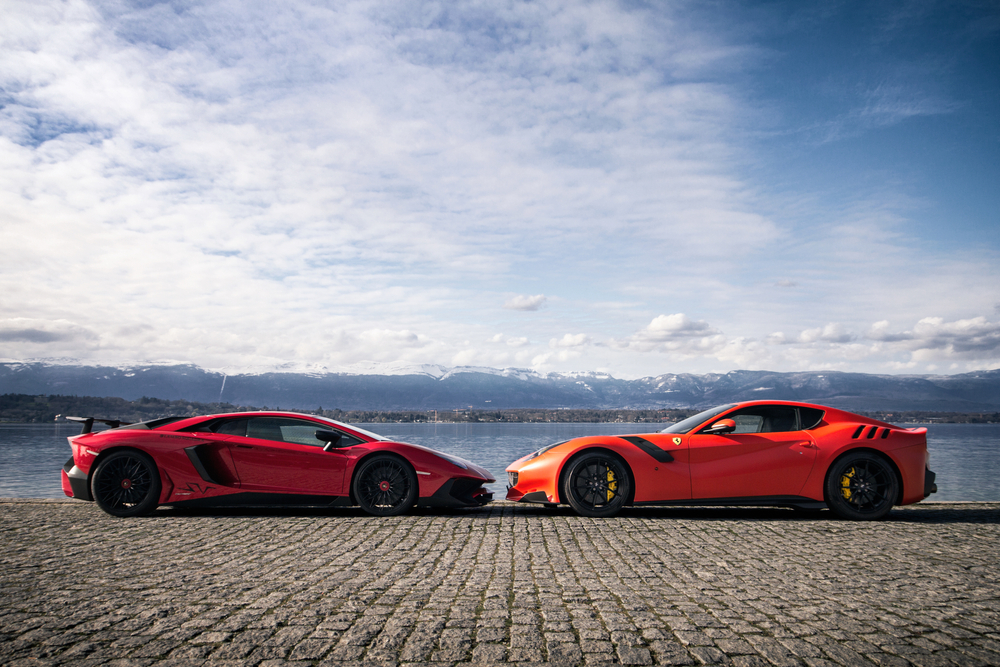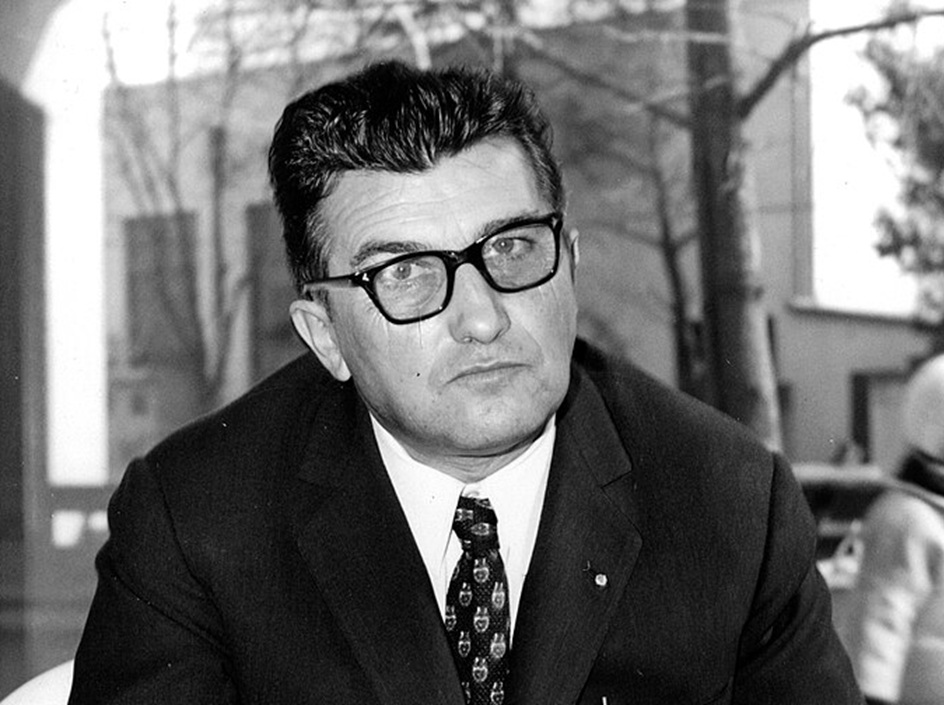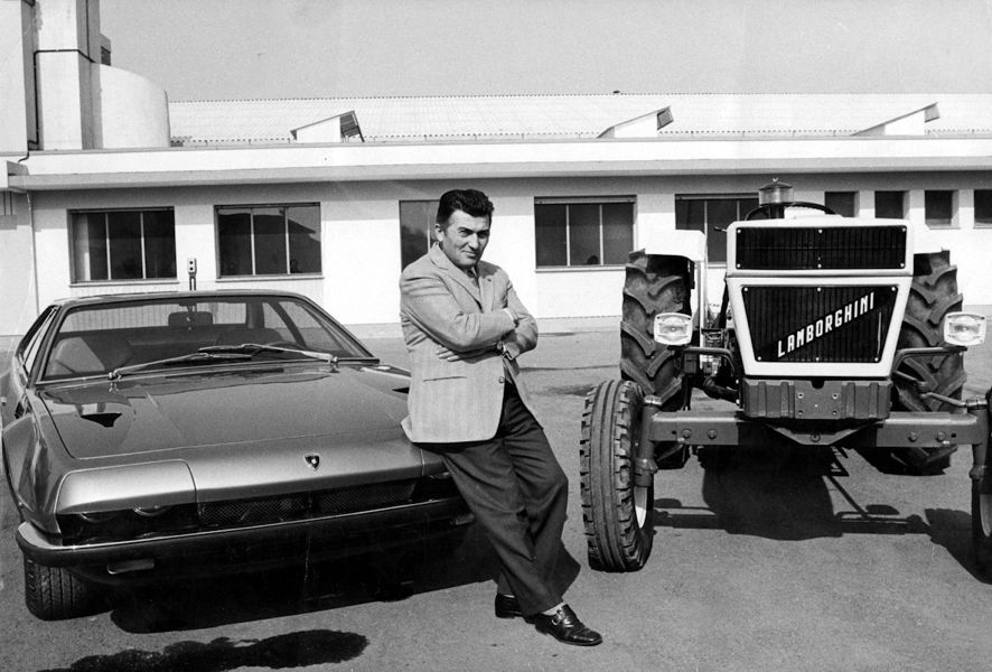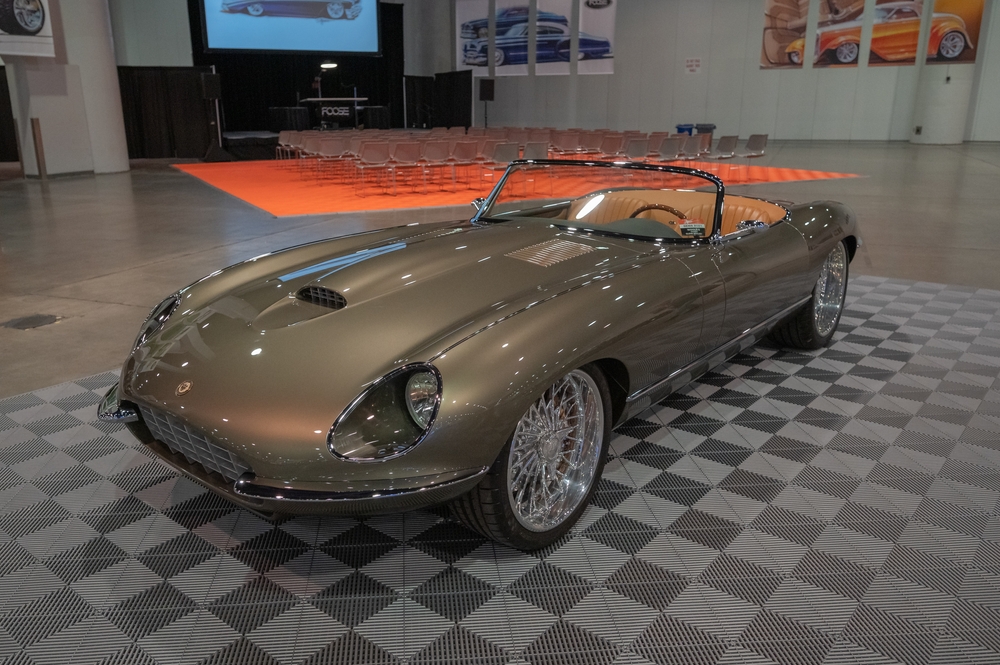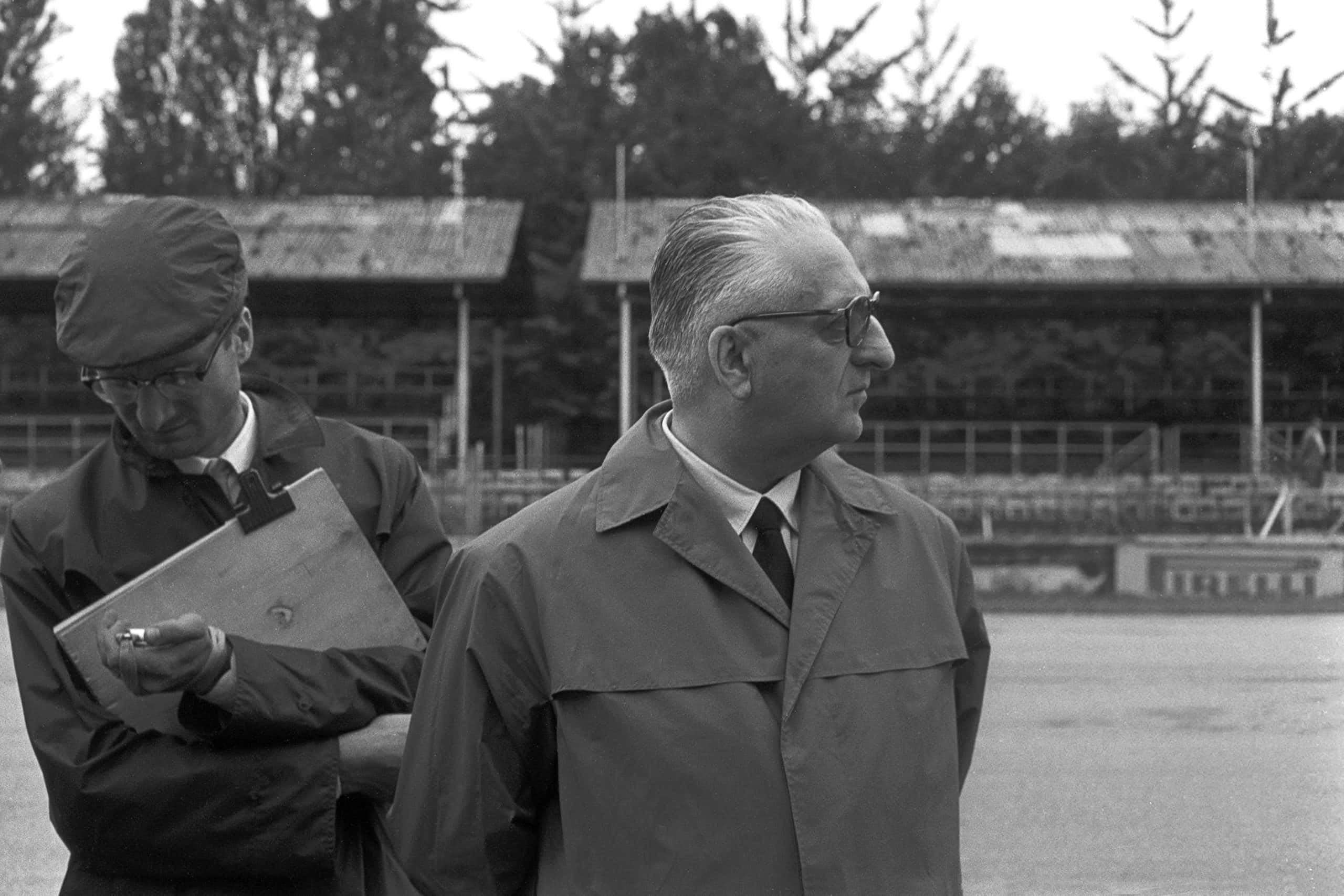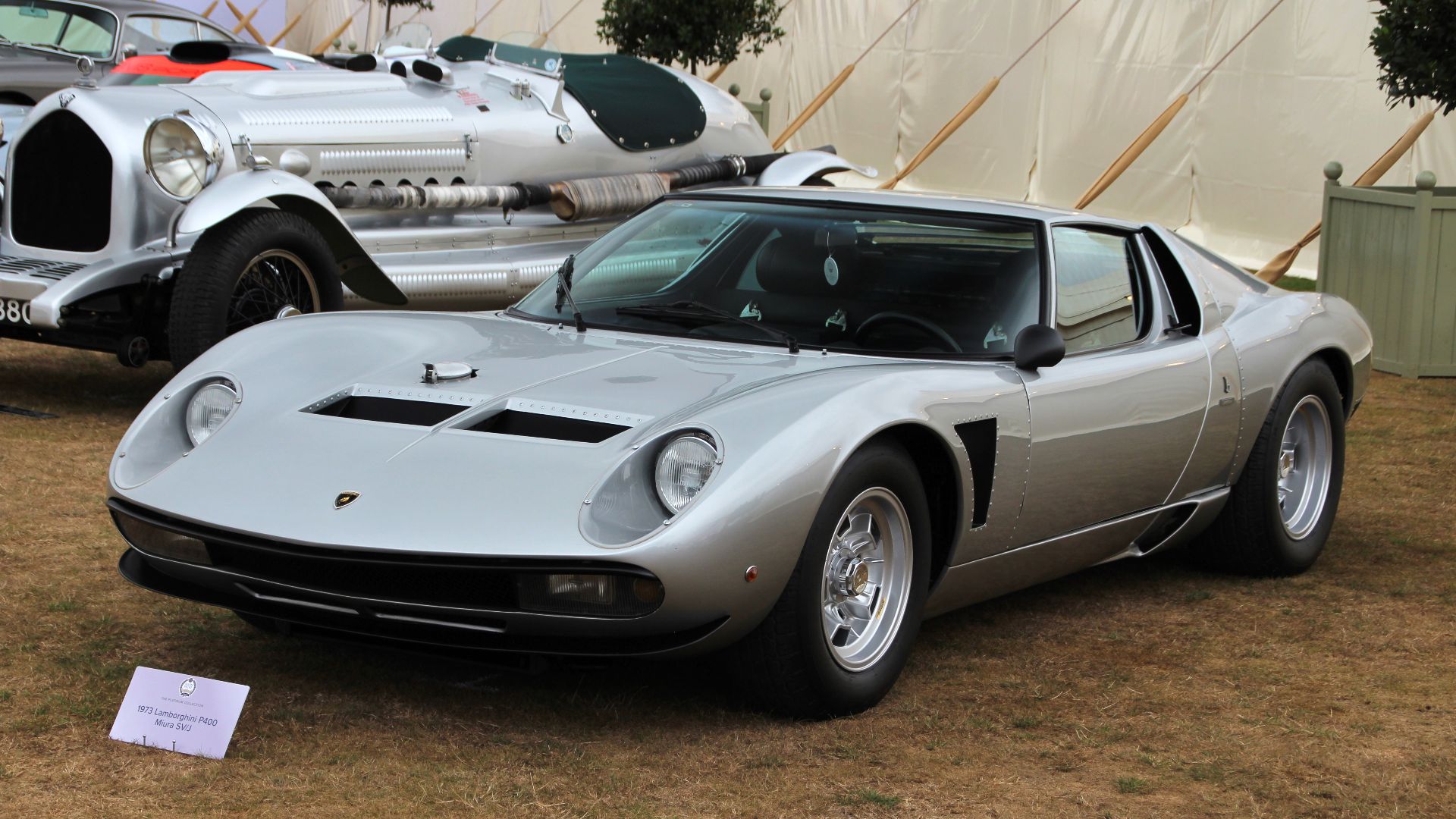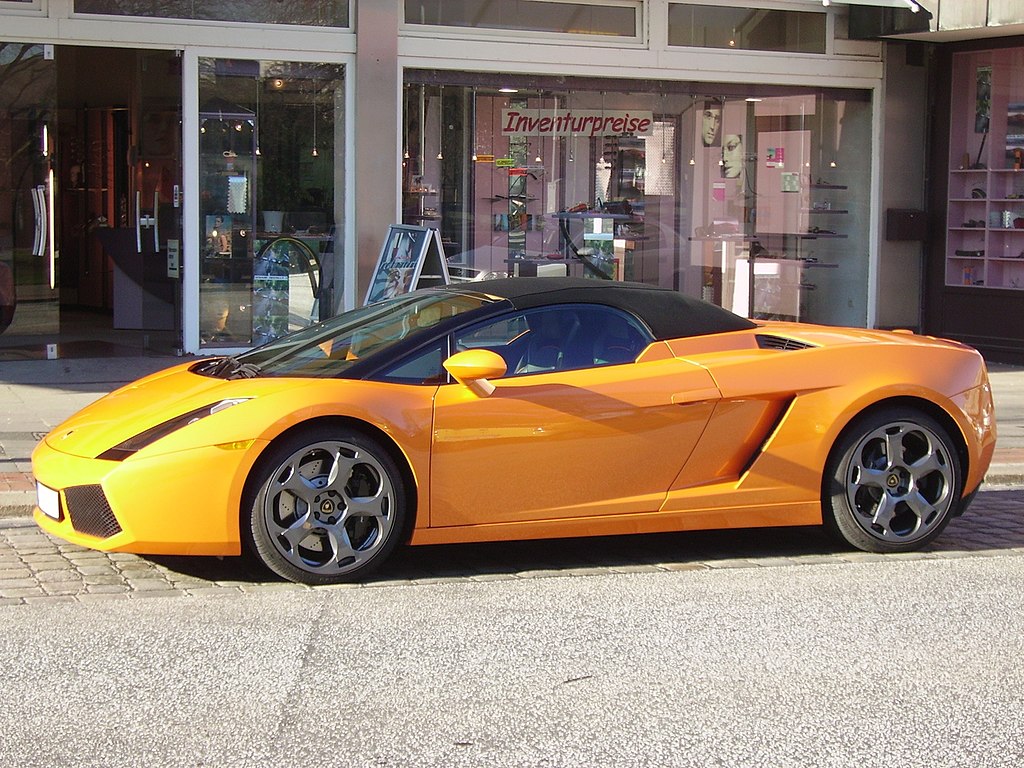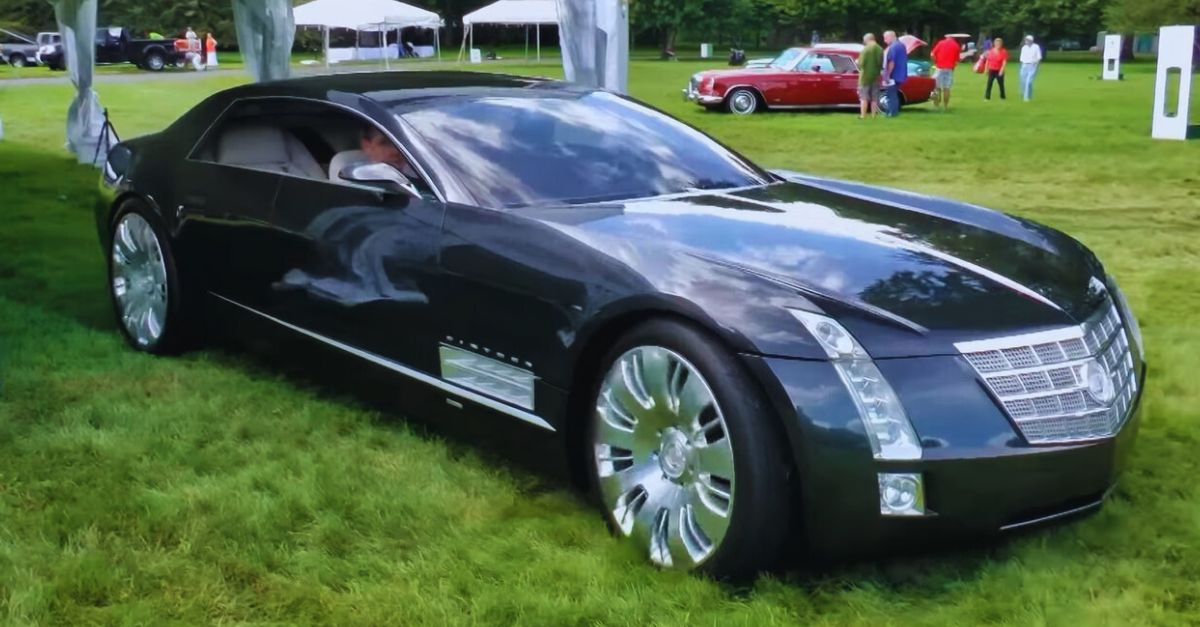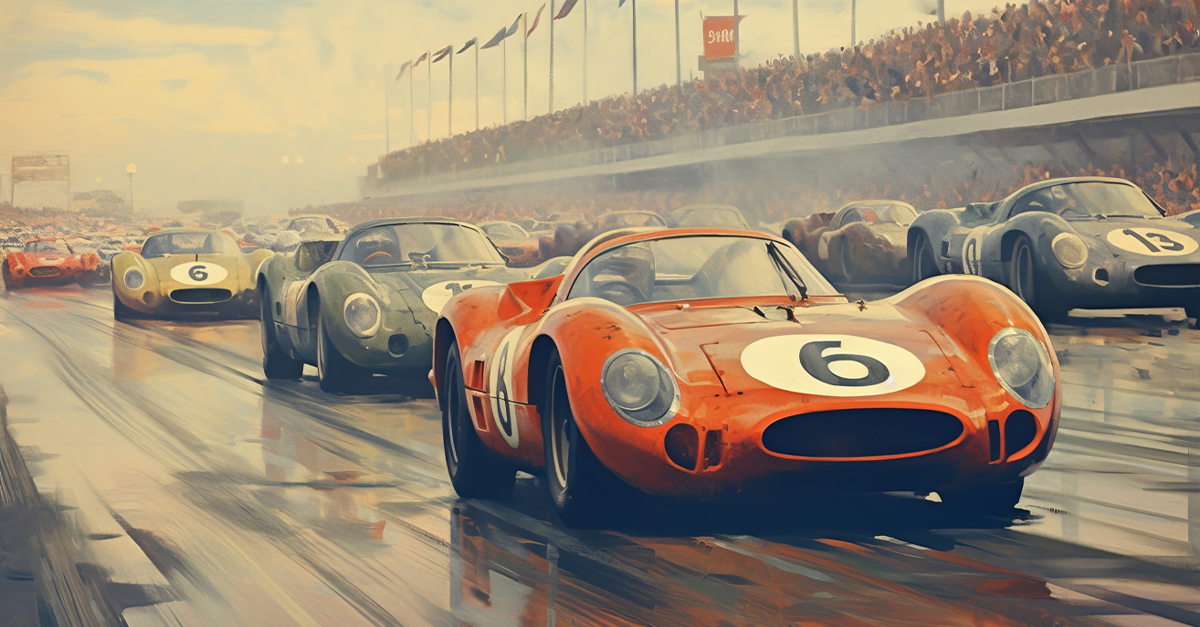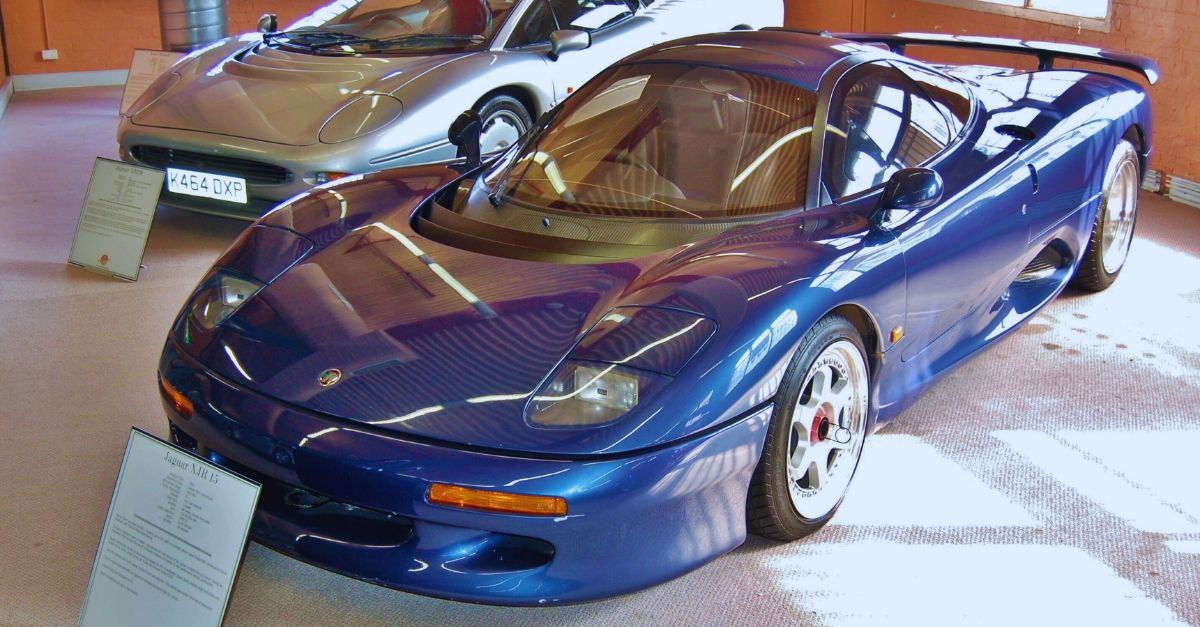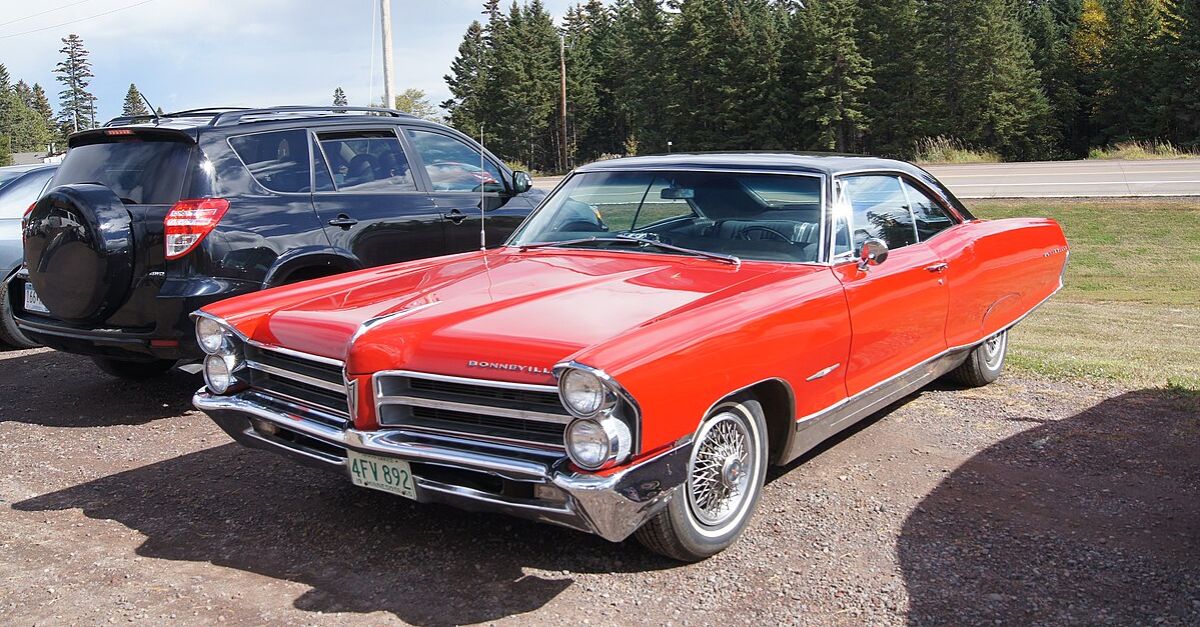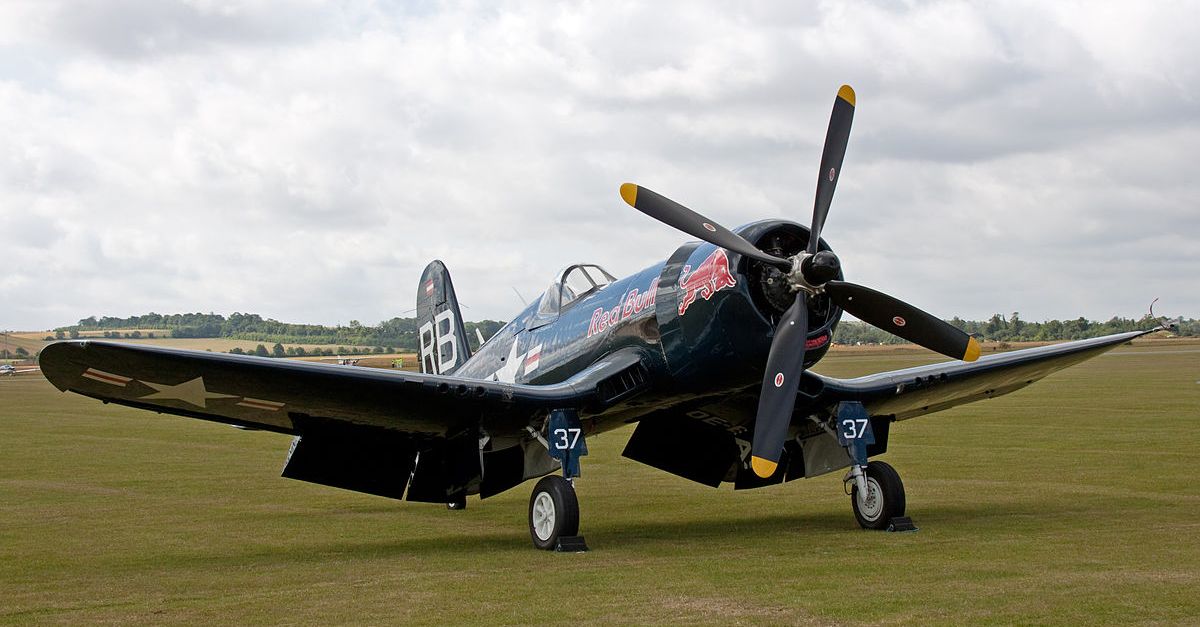Lamborghini Or Ferrari: Which One Are You?
Italy has witnessed many sports rivalries throughout the centuries, from gladiators to the biggest game in Italian soccer: the Milan Derby between Inter and AC Milan. However, one rivalry is less discussed and brewed quietly in factories across Italy in the mid-20th century. It pitted two of the greatest car creators of all time against each other: Ferruccio Lamborghini V Enzo Ferrari. Let's examine the greatest rivalry in motorsport history.

The Beginnings Of The Companies
Before we start detailing how the Prancing Horse and Raging Bull faced off against one another, let's start by taking you through the history of how Ferrari and Lamborghini got their starts under two motoring geniuses: Enzo Ferrari and Ferruccio Lamborghini.
Who Was Enzo Ferrari?
Enzo Ferrari was born in Modena, Italy, on February 18, 1898. His father owned a metal fabrication shop next door to the family home, and it was in this family business that Ferrari plied his trade before finding a job (after serving in World War I) as a test driver for a small Italian car manufacturer in Milan.
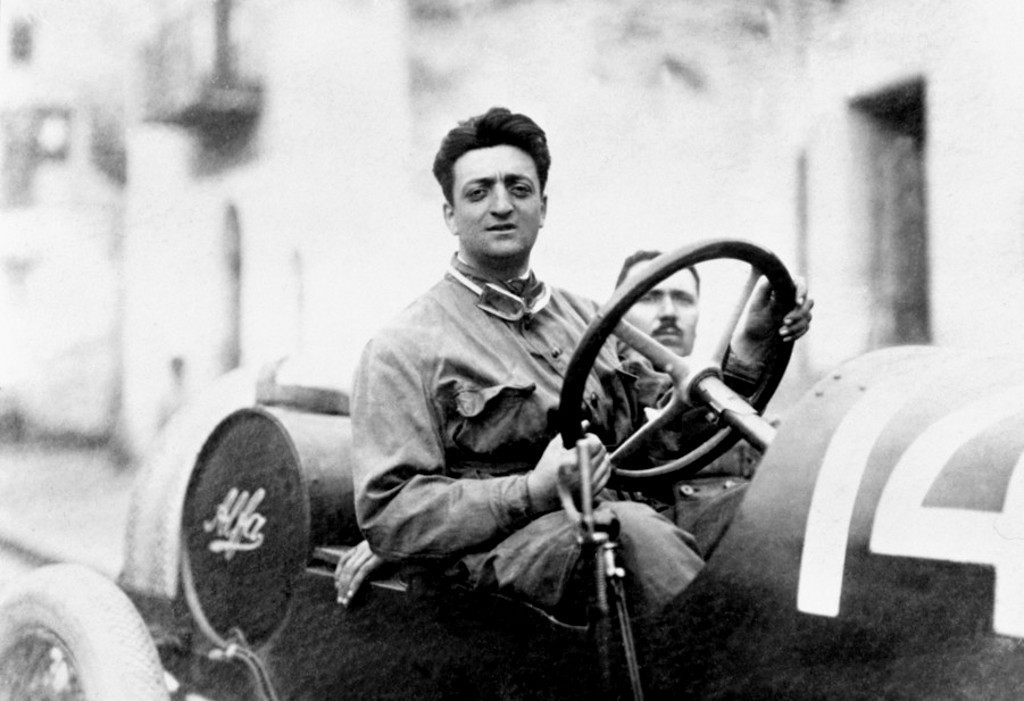 Unknown Author, Wikimedia Commons
Unknown Author, Wikimedia Commons
Racing Consumes Ferrari
Enzo Ferrari would soon make his racing debut at the 1919 Parma-Poggio di Berceto hill climb race, finishing fourth. In 1920, Ferrari joined Alfa Romeo as a driver and would win his first Grand Prix in 1923. But two on-track fatalities of close racing friends in 1925 had Ferrari reconsidering his career as a driver.
 Jacek Halicki, Wikimedia Commons
Jacek Halicki, Wikimedia Commons
Ferrari Quits, Forms A Superstar Team Of Racing Drivers
Following the birth of his son, Dino Ferra, in 1932, Ferrari decided to retire from motorsport racing and instead focus on building a team of superstar racers. He persuaded Giuseppe Campari and Tazio Nuvolari to join his new team, Scuderia Ferrari.
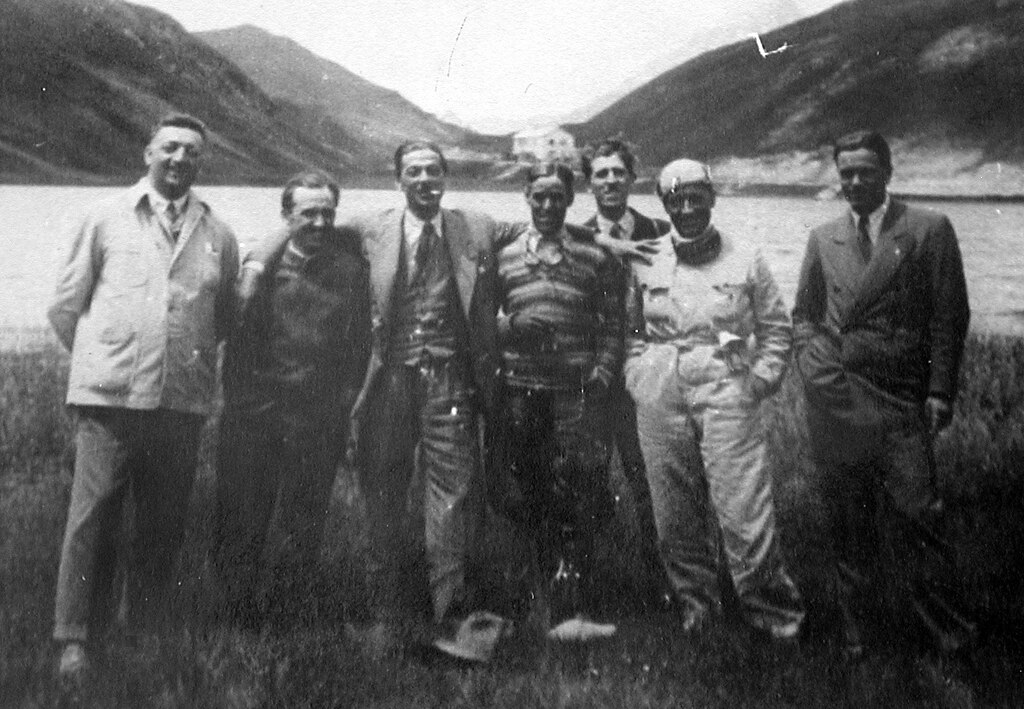 Unknown Author, Wikimedia Commons
Unknown Author, Wikimedia Commons
The Origin Of The Prancing Horse
The world-famous Prancing Horse logo has its origins during World War I. Francesco Baracca was one of Italy's greatest fighter pilot aces. Before take-off, his mother gave him a necklace with a prancing horse on it. This symbol would be emblazoned on the side of his aircraft. After he was shot down in 1918 (resulting in his death), Enzo Ferrari would use the Prancing Horse as an emblem in his memory.
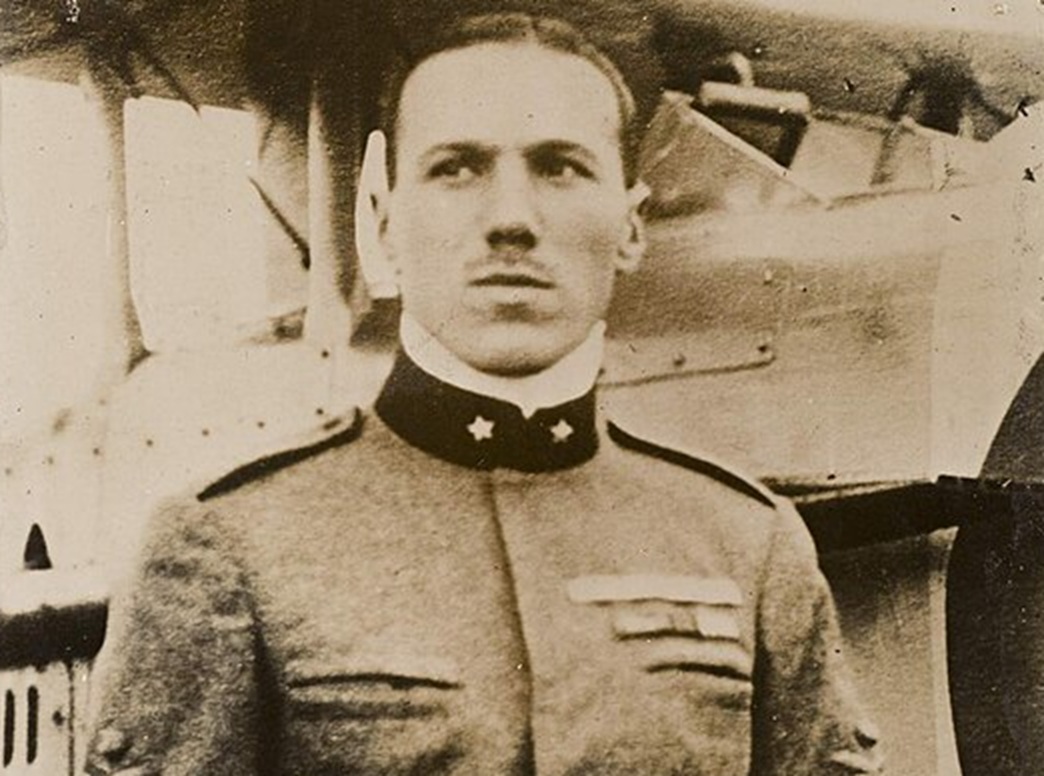 Université de Caen Basse-Normandie, Wikimedia Commons
Université de Caen Basse-Normandie, Wikimedia Commons
Ferrari Established In 1947
After leaving Alfa Romeo with his racing drivers in 1939, Enzo Ferrari established a workshop, but was barred from building cars for four years under his contract with Alfa Romeo. Instead, he supplied racing parts to other teams. After the end of World War II, Enzo established Ferrari S.p.A in 1947.
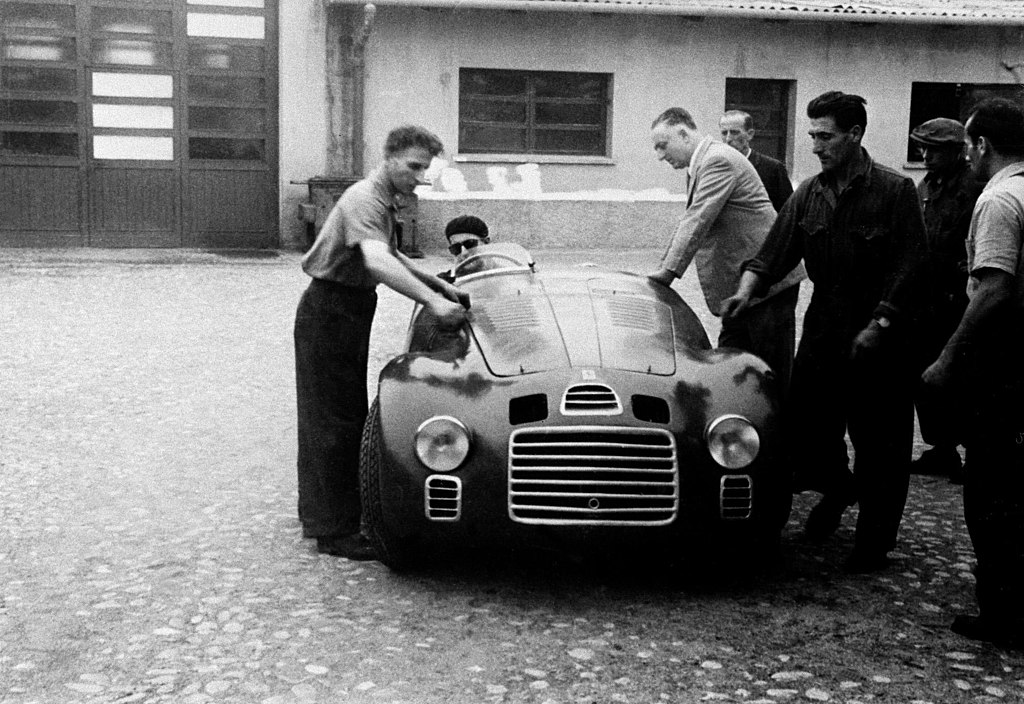 Unknown Author, Wikimedia Commons
Unknown Author, Wikimedia Commons
The First Ferrari Car
The first ever car produced by Ferrari was the Ferrari 125 S, built in 1947. It was designed for sports car racing and debuted at the Piacenza racing circuit. Its 1.25L V12 engine could produce 118 hp and propelled Enzo's first Ferrari car to a top speed of 106 mph.
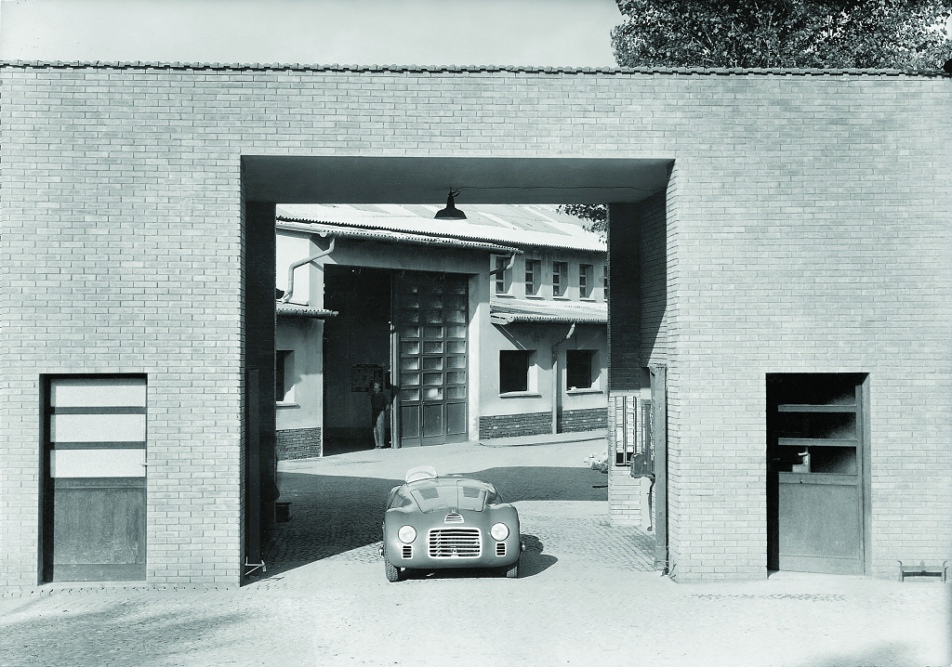 Unknown Author, Wikimedia Commons
Unknown Author, Wikimedia Commons
The First Major Victory For Ferrari
A major victory at the 1949 24 Hours at Le Mans race put Ferrari on the map, after his 166 MM beat out Alfa Romeo, his direct competitor.
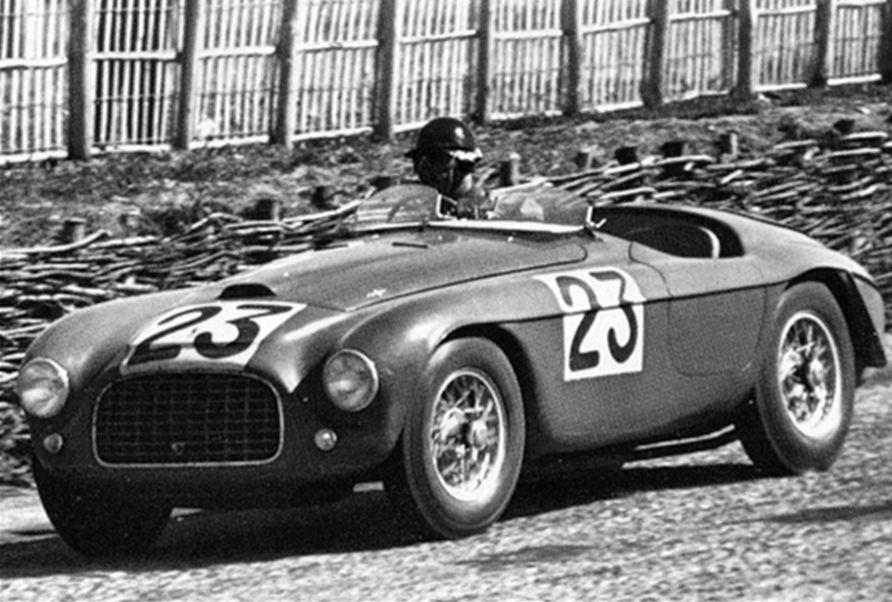 Unknown Author, Wikimedia Commons
Unknown Author, Wikimedia Commons
Ferrari's First Grand Prix Victory Cements A Legacy-To-Be
In 1950, Ferrari enrolled in the newly-formed Driver's World Championship (a precursor to Formula 1) and in 1951, he won his first Grand Prix at Silverstone. Apparently, Ferrari cried after his victory, cementing the beginning of one of the greatest legacies in motorsport history.
Ferrari's Management Style
Despite the first-ever Ferrari being a road car, it's widely speculated that Enzo Ferrari's first love was the racing element of Ferrari S.p.A and that he quickly lost affection for the road car division. It's often said that his management style of his racing teams was autocratic and that he was tough on all of his drivers.
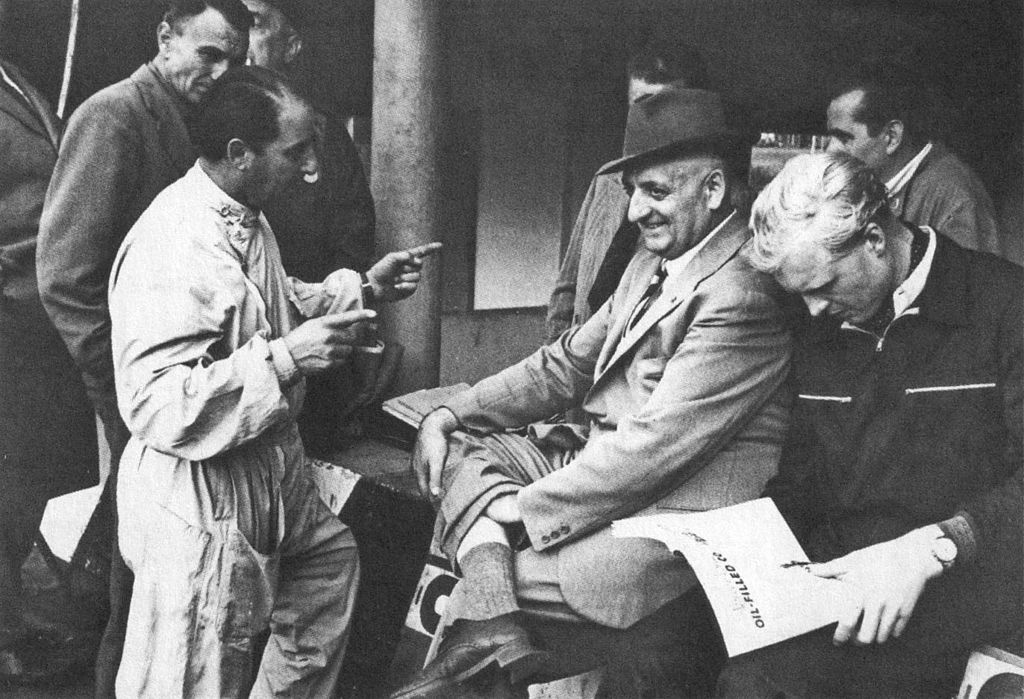 Ronald Startup, Wikimedia Commons
Ronald Startup, Wikimedia Commons
Eight Ferrari Deaths In 16 Years
After eight Ferrari drivers had died in racing between 1955 and 1971, Ferrari was called out by the Vatican's own newspaper and likened to the Roman God, Saturn, who had consumed his own sons. Harsh, especially considering that Ferrari was a practicing Catholic.
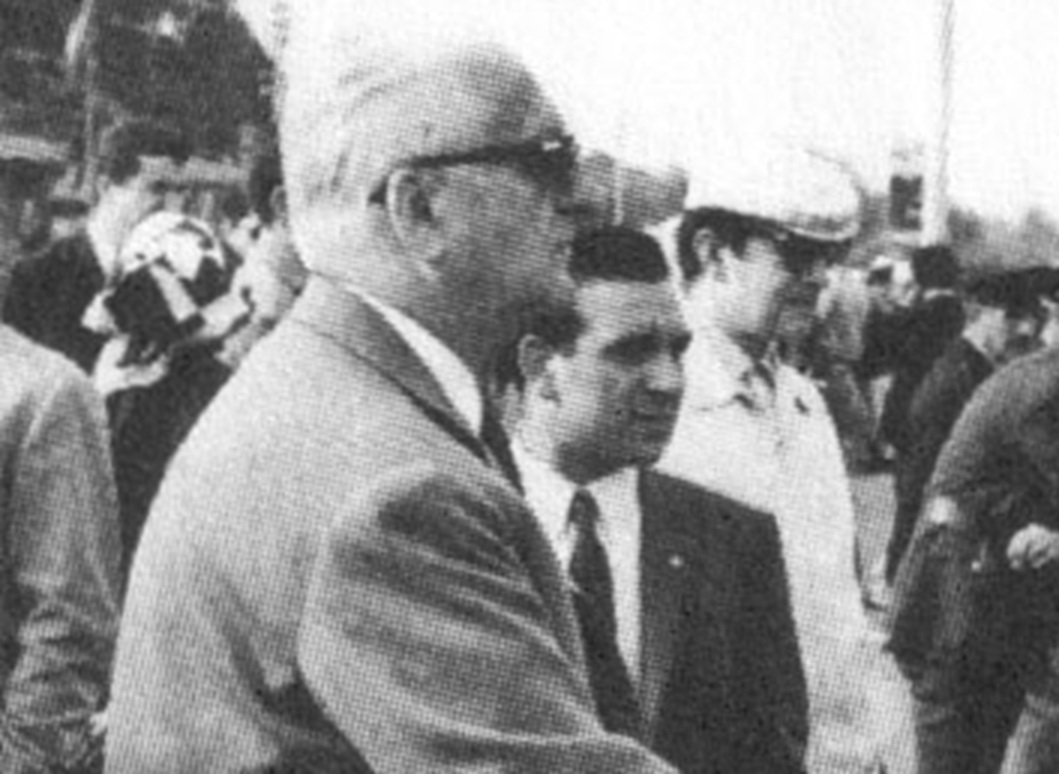 Reg Lancaster, Wikimedia Commons
Reg Lancaster, Wikimedia Commons
The New Kid On The Block
While Enzo Ferrari had spent decades establishing a reputation and building a vehicular empire, there was to be a new kid on the block: Ferruccio Lamborghini. A former Ferrari customer, Lamborghini and Ferrari would have a single encounter in the early 1960s that sparked a rivalry for the ages.
Who Was Ferruccio Lamborghini?
In contrast to Ferrari, who some might say was born to build successful race cars after his military career in WWII, Ferruccio Lamborghini decided to start a business building tractors. He bought surplus military vehicles from the Italian government and transformed them into tractors.
Building Lamborghini
Among the first Lamborghinis he would build were renovated Fiat Topolinos, which he purchased. He would modify them heavily by swapping the engines for something more powerful: 750ccs. He followed that up by cutting off the roof to create an open-top two-seater car. He entered one of them into the 1948 Mille Miglia endurance race. Driving the car himself, he crashed into the side of a restaurant after 680 miles.
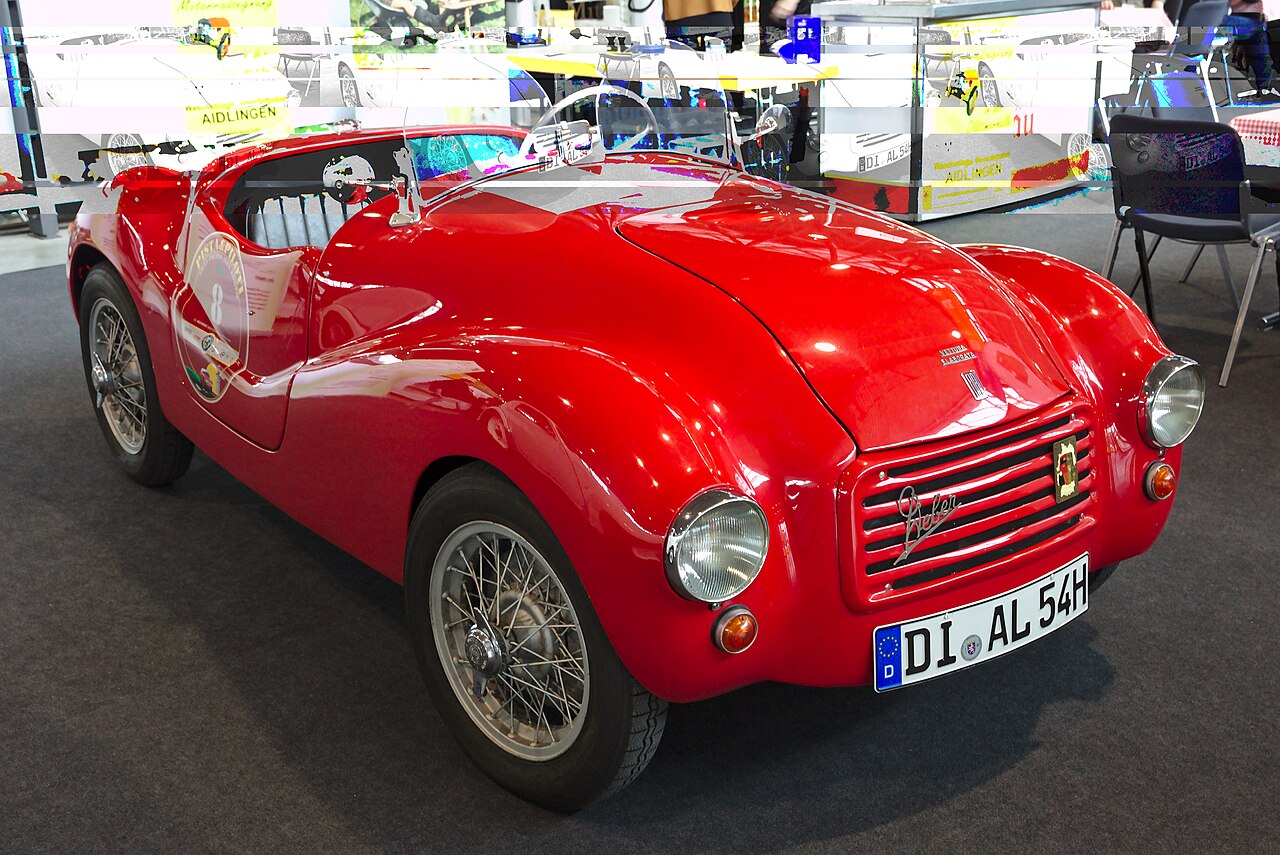 Alexander Migl, CC BY-SA 4.0, Wikimedia Commons
Alexander Migl, CC BY-SA 4.0, Wikimedia Commons
Building Tractors Using Different Fuel
In post-war Italy, petroleum was very expensive. It was too much for Lamborghini to afford, so when he built his first "Carioca" tractor, he used a fuel atomizer of his own design to transition his Morris engines so they could be started with gasoline, but then switch to diesel.
 Lamborghini 1R, CC BY-SA 4.0, Wikimedia Commons
Lamborghini 1R, CC BY-SA 4.0, Wikimedia Commons
An Increasing Involvement With Cars
Despite beginning his automobile engineering journey on massive, four-wheeled tractors and relatively tame Fiats, Lamborghini's successful "trattore" business allowed him to purchase more luxurious vehicles. At one point, he owned a Maserati, a Mercedes-Benz, and a Jaguar E-Type.
Ferruccio Lamborghini Buys A Ferrari
In 1958, Ferruccio Lamborghini travelled to Maranello to purchase a Ferrari 250 GT, priced at around $18,000. He would own several 250 GTs throughout the next few years but eventually found them dissatisfactory. He categorized them as "repurposed race cars with poorly-built interiors".
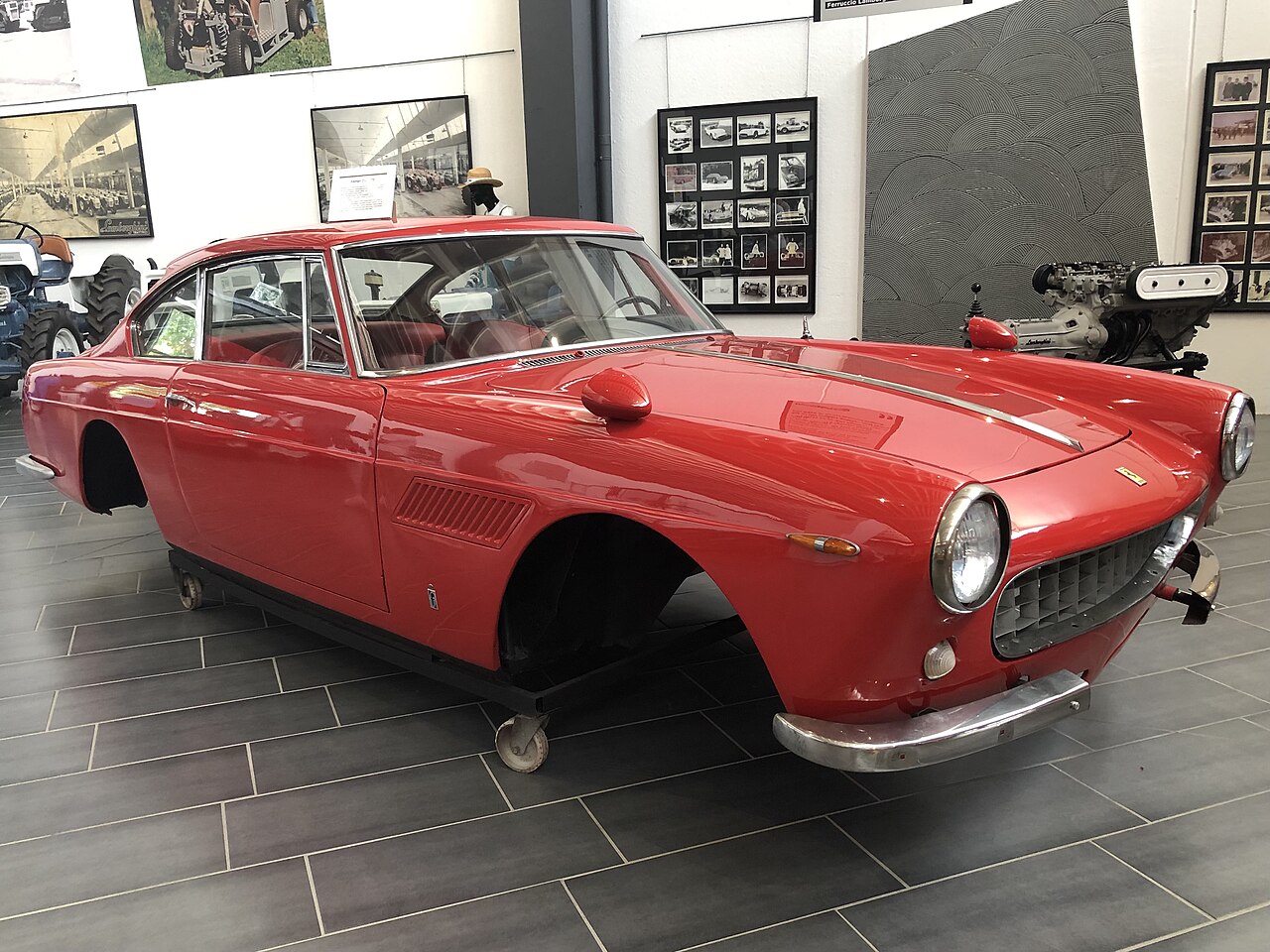 TKOIII, CC BY 4.0, Wikimedia Commons
TKOIII, CC BY 4.0, Wikimedia Commons
His Concerns Are Dismissed By Enzo Ferrari
Lamborghini brought various concerns about the car's performance to Ferrari's after-sale service team, but each time was dissatisfied with the results. So, he went straight to the head honcho: Enzo Ferrari himself. These concerns about the design flaws were dismissed out of hand by Ferrari. This upset Lamborghini greatly, who decided he would try and usurp the king of Italian motorsport.
 User, CC BY-SA 4.0, Wikimedia Commons
User, CC BY-SA 4.0, Wikimedia Commons
Harsh Words From Enzo Ferrari
Apparently, Lamborghini says that Ferrari told him, "You may be able to drive a tractor. But you will never be able to handle a Ferrari properly". This, according to Ferruccio Lamborghini, was when he decided to "make a perfect car".
The Raging Bull Enters The Ring
In 1963, Lamborghini created Lamborghini Automobili and built a factory in Sant'Agata Bolognese. He commissioned a team of highly capable engineers and technicians, building the first ever Lamborghini: the 350 GTV. While designing it, he said: "A Lamborghini has to be beautiful, fast, comfortable, luxurious and fun to drive; it has to be the best GT ever made".
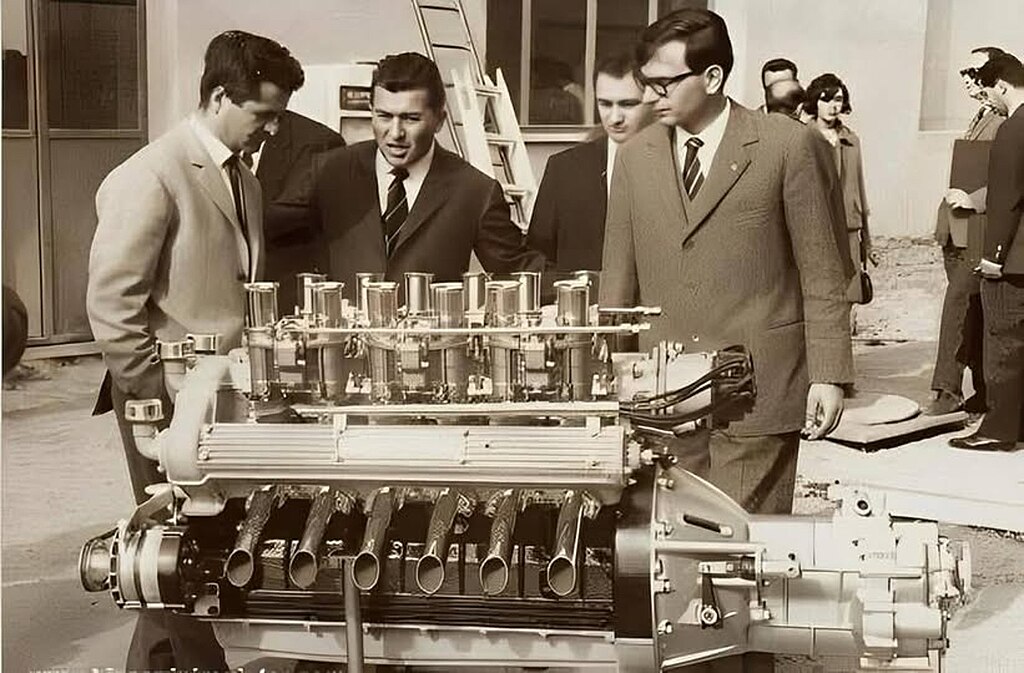 Maxperot, Khruner, Wikimedia Commons
Maxperot, Khruner, Wikimedia Commons
The First Lamborghini Car
Unfortunately for Ferruccio Lamborghini, the 350 GTV wasn't exactly a roaring success. It was first unveiled at the 1963 Auto Show in Turin and had adopted a futuristic design that didn't sit well with the Italian public, who had grown used to the contemporary classic designs of Ferrari. It did have a 3.5L V12 designed by Lamborghini himself, with an estimated top speed of 170 mph.
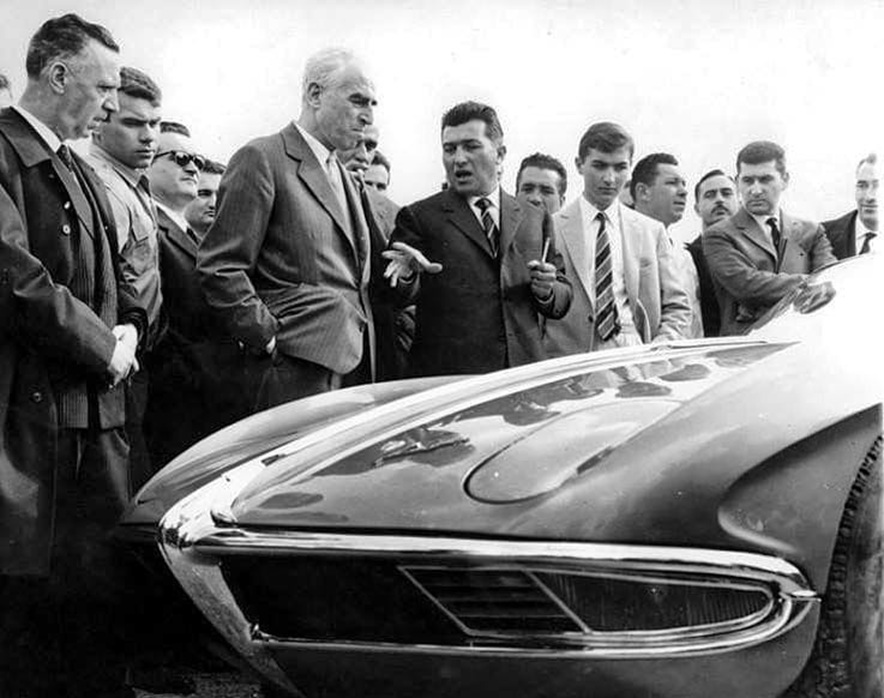 Unknown Author, Wikimedia Commons
Unknown Author, Wikimedia Commons
It Was Incomplete
Despite being on-show in Turin, the car was actually incomplete. It didn't have basic things like brake calipers, windshield wipers, or brake pedals. The engine bay was also ballasted with bricks during the show and the car was never realized as a road-going vehicle.
 Classic Virus, CC BY 2.0, Wikimedia Commons
Classic Virus, CC BY 2.0, Wikimedia Commons
Lamborghini's First Operable, Saleable Car: The 350 GT
After changing design teams, Lamborghini eventually produced a workable, saleable car: the Lamborghini 350 GT. Produced for two years between 1964 and 1966, the 350 GT was the first production car made by Lamborghini. 120 of the grand tourers were built, each one hand-crafted with a 3.5L V12 engine that produced 280 hp and a top speed of 158 mph. Sales of the 350 GT skyrocketed.
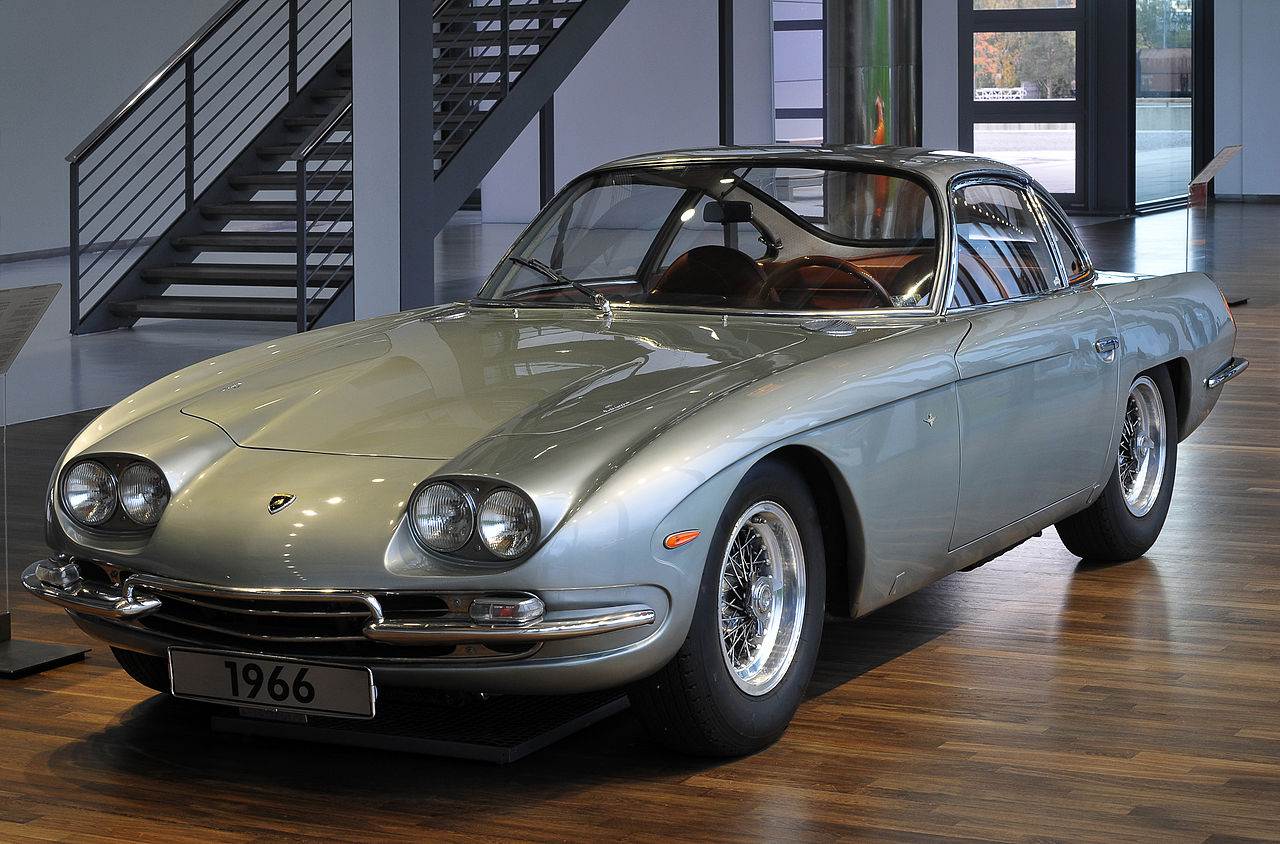 Ralf Roletschek, GFDL 1.2, Wikimedia Commons
Ralf Roletschek, GFDL 1.2, Wikimedia Commons
A Focus On Customer Satisfaction
One of the things that Ferruccio Lamborghini sought to establish was a brand that was big on customer satisfaction. Apparently, he implemented a policy as sales boomed throughout the late 1960s, stipulating that if a customer had a technical or engineering problem with their Lambo, the company would send out an engineer (by plane if necessary) to repair the car on the spot—complete with a letter of apology. Perhaps this is due to how Lamborghini was treated by Enzo Ferrari.
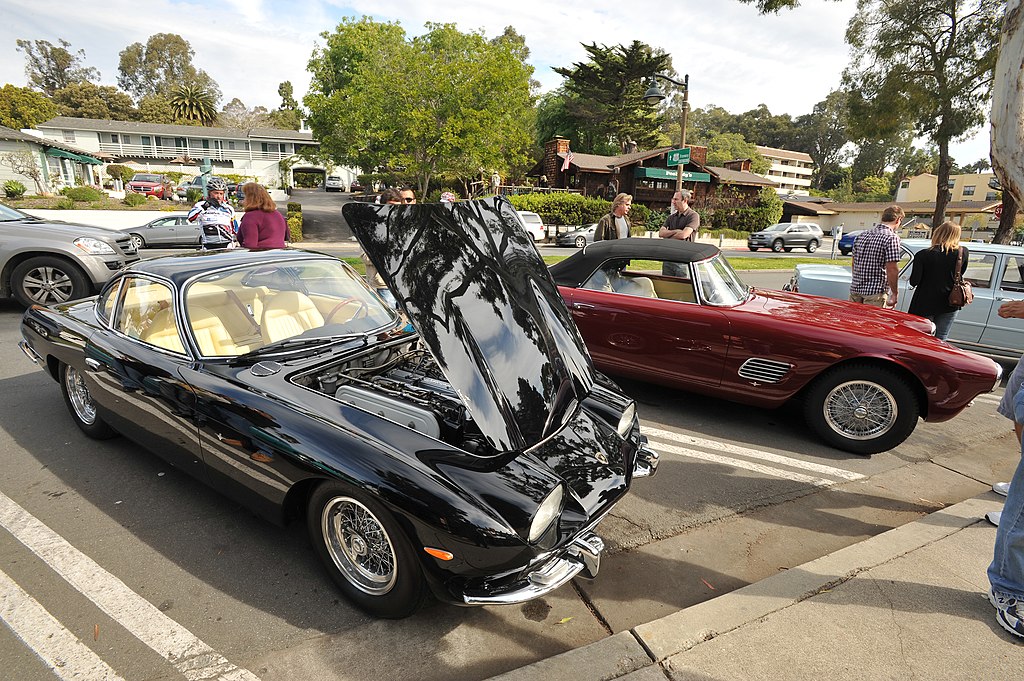 Edgy01, CC BY 3.0, Wikimedia Commons
Edgy01, CC BY 3.0, Wikimedia Commons
The Bull Nomenclature
Most of Lamborghini's cars are named after famous Spanish fighting bulls. This came about in 1962, after Lamborghini visited the ranch of Don Eduardo Miura, a Spanish bullfighter. He decided to use Miura's name for his Lamborghini Miura supercar and a drawing of the Spanish Miura bull would later be used as the company's emblem.
 Unknown Author, Wikimedia Commons
Unknown Author, Wikimedia Commons
The Groundbreaking Miura
In 1966, Lamborghini began producing the Miura, a two-door, rear-wheel drive coupe. Originally, Ferruccio had expressed doubt at designing a race car, preferring the opulent grand tourers which Lamborghini had become famous for. Giving the car the go-ahead, Lamborghini's design team set about creating the ground-breaking machine.
The Lamborghini Miura Is Completed
Once completed, the Miura was revealed at the 1965 Turin Auto Show. The press went wild. The mid-engine design was revolutionary and the car continued to receive updates from 1966 to 1973, when it was replaced by the Lamborghini Countach.
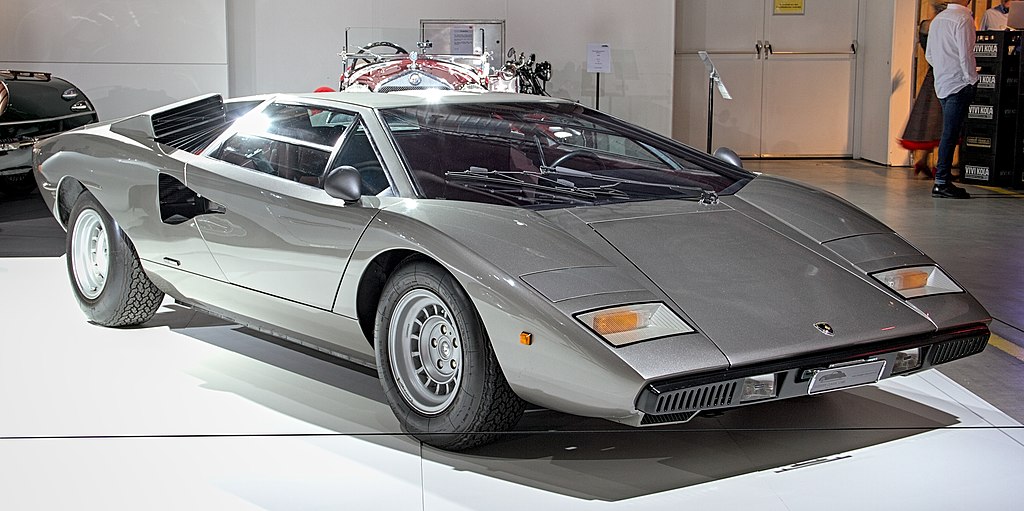 Alexander Migl, CC BY-SA 4.0, Wikimedia Commons
Alexander Migl, CC BY-SA 4.0, Wikimedia Commons
The 1973 Oil Crisis Hits Both Companies Hard, But Lamborghini Harder
An oil embargo triggered by the Yom Kippur War meant that fuel prices skyrocketed across Europe, hitting car manufacturers like Ferrari and Lamborghini in their pocketbooks. While Enzo Ferrari was able to ride out the wave of cancelled projects and lack of motorsport racing, Ferruccio Lamborghini was less fortunate.
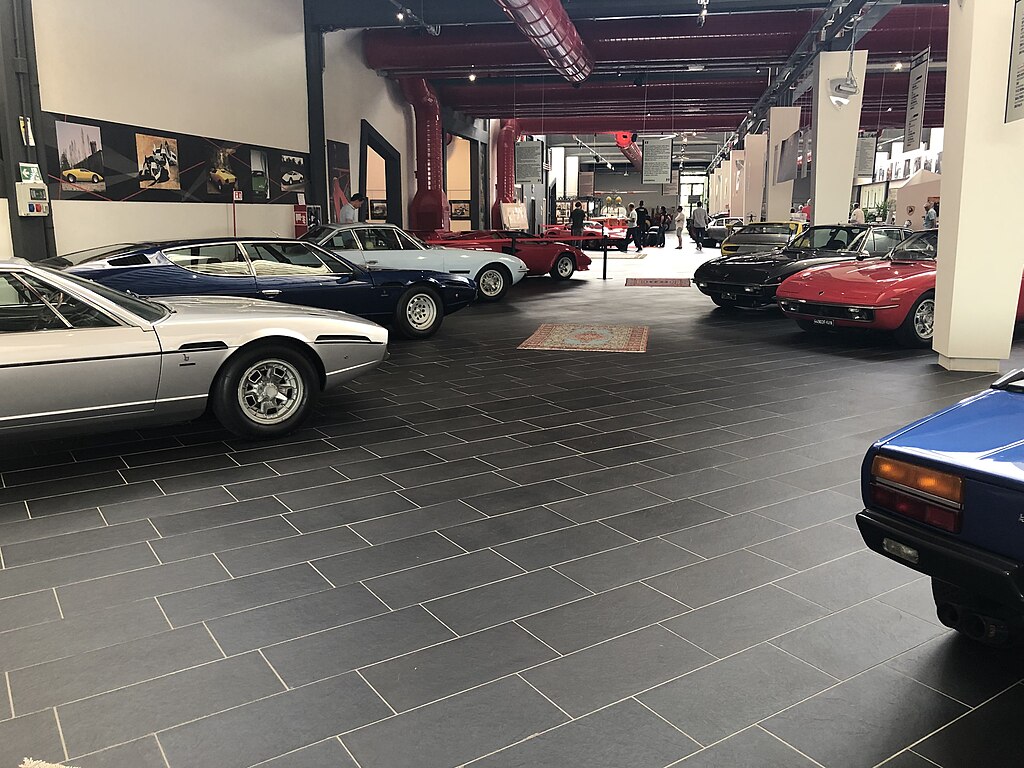 TKOIII, CC BY-SA 4.0, Wikimedia Commons
TKOIII, CC BY-SA 4.0, Wikimedia Commons
Lamborghini Walks Away From Lamborghini Automobili
In 1974, following the end of the embargo, as people moved away from high-performance sports cars, Ferruccio Lamborghini became disenchanted with the business, selling all of his shares and severing connections with cars that bore his name. He exited the industrial world entirely and retired to a 740-acre estate in Umbria, Italy.
 Countachinfo.de, CC BY-SA 4.0, Wikimedia Commons
Countachinfo.de, CC BY-SA 4.0, Wikimedia Commons
A Few Favorites Throughout The Decades
By the late 1970s, Ferruccio Lamborghini and Enzo Ferrari had both respectively bowed out of the companies they'd begun, except for Enzo holding onto the Racing Department of Ferrari S.p.A, Let's go over a few of the greatest cars ever created by the bitter rivals.
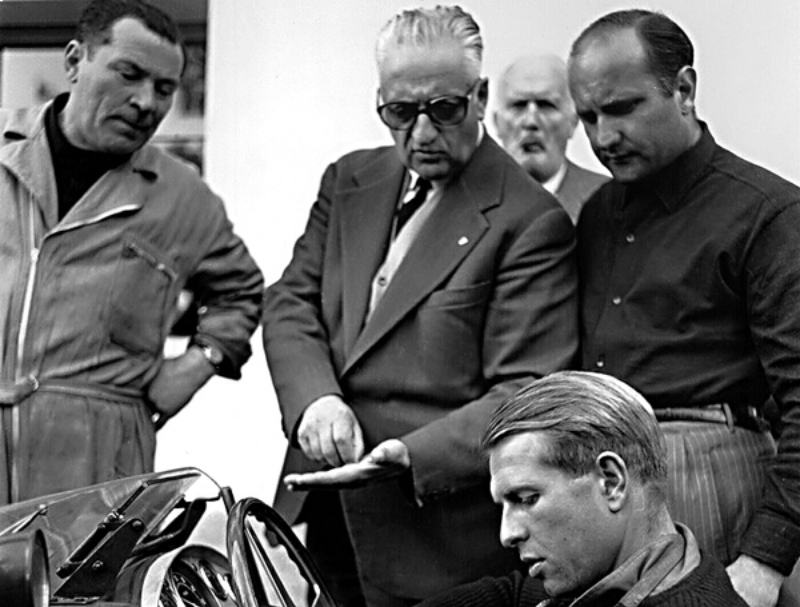 Louis Klemantaski, Wikimedia Commons
Louis Klemantaski, Wikimedia Commons
Lamborghini Miura
The Lamborghini Miura is widely considered one of history's greatest supercars, featuring a groundbreaking 3.9L V12 engine that was mounted in the middle of the car. Interestingly, when it was revealed at the Turin Auto Show, there was just a rolling chassis, with no body to go over it. Orders placed on the spot meant that Lamborghini had to scramble to design the body.
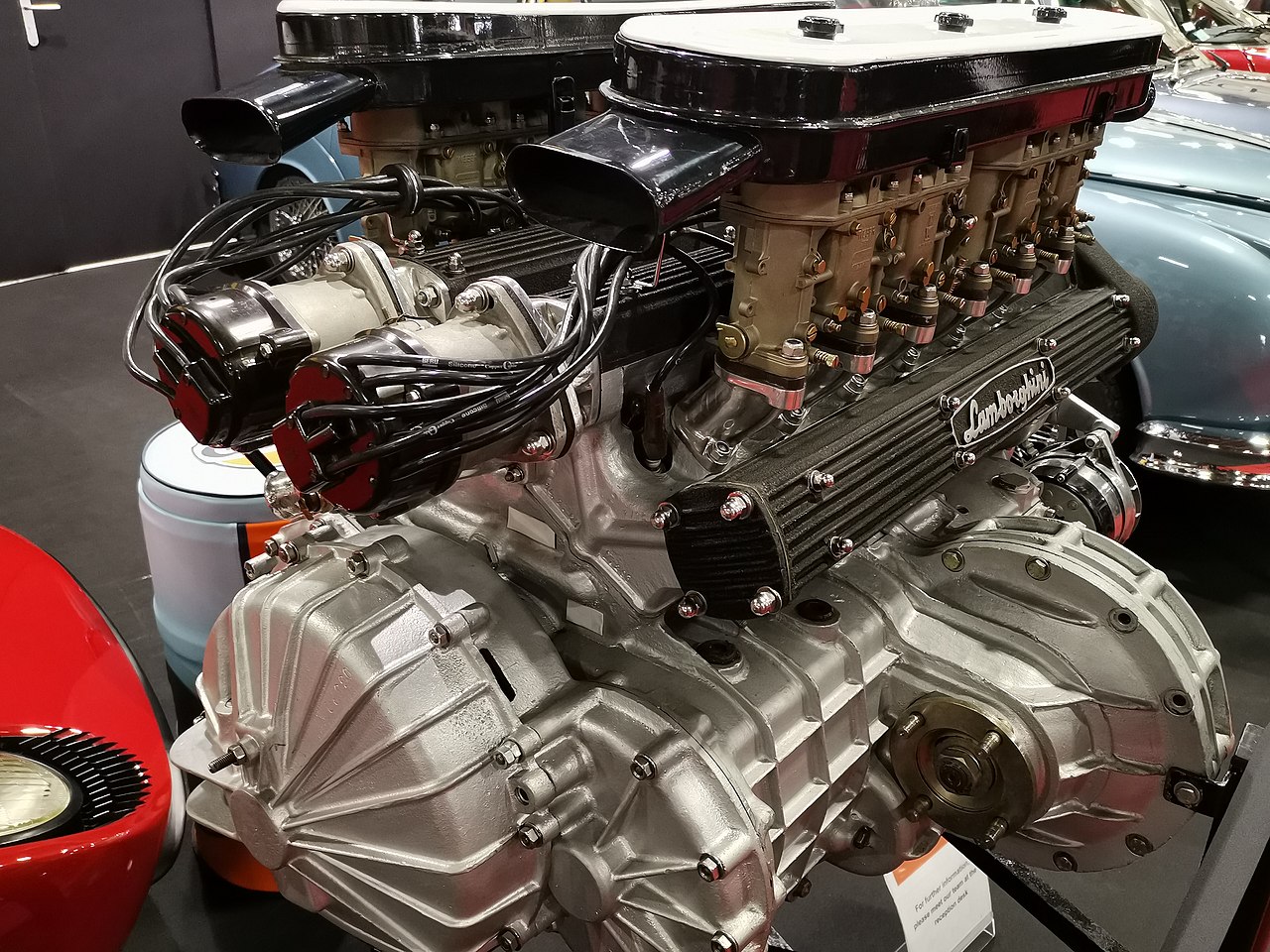 Loadsas, CC BY-SA 4.0, Wikimedia Commons
Loadsas, CC BY-SA 4.0, Wikimedia Commons
Ferrari 250 GTO
A classic from Ferrari was the Ferrari 250 GTO, produced between 1962 and 1964. Powered by Ferrari's Colombo V12 engine that produced 300 hp and had a top speed of around 174 mph, its sleek design and racing-style body and interior borrowed from Ferrari racers of the day. It's widely considered to be one of the greatest Ferraris of all time.
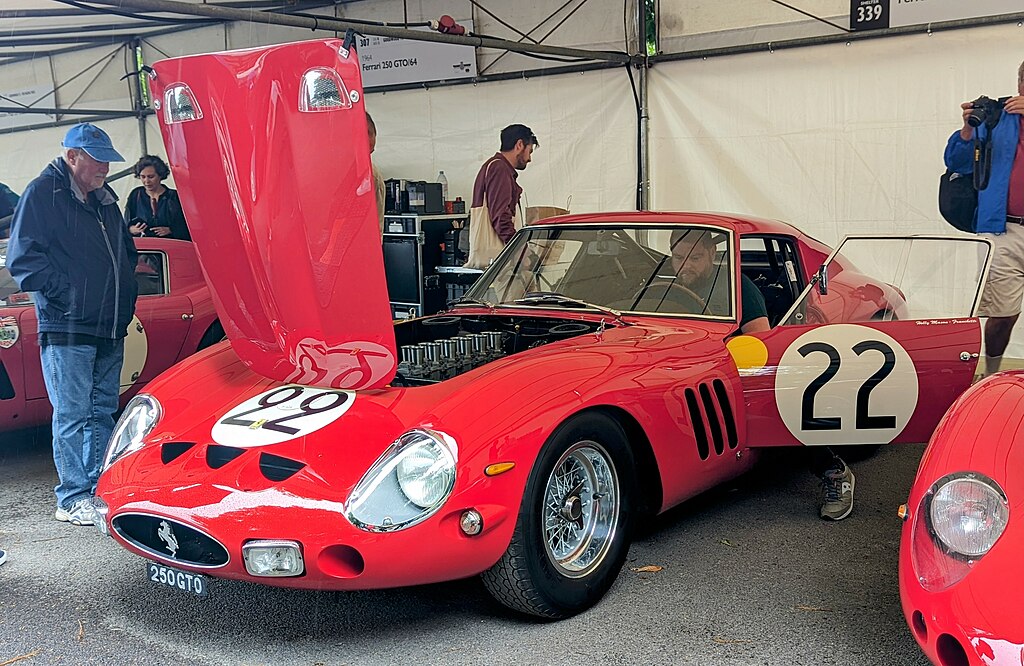 Calreyn88, CC BY 4.0, Wikimedia Commons
Calreyn88, CC BY 4.0, Wikimedia Commons
Lamborghini Countach
Bested only by the one that replaced it: the audacious Countach, with its scissor doors, wedge-shaped design and V12 engine. The Countach was actually named for a Piedmontese locksmith who worked with the team from Lamborgini during the design of the car, but only spoke Piedmontese, not Italian or French. His most common phrase was "Countach", which literally translates to "plague", but was often used by the engineer to mean "oh, goodness".
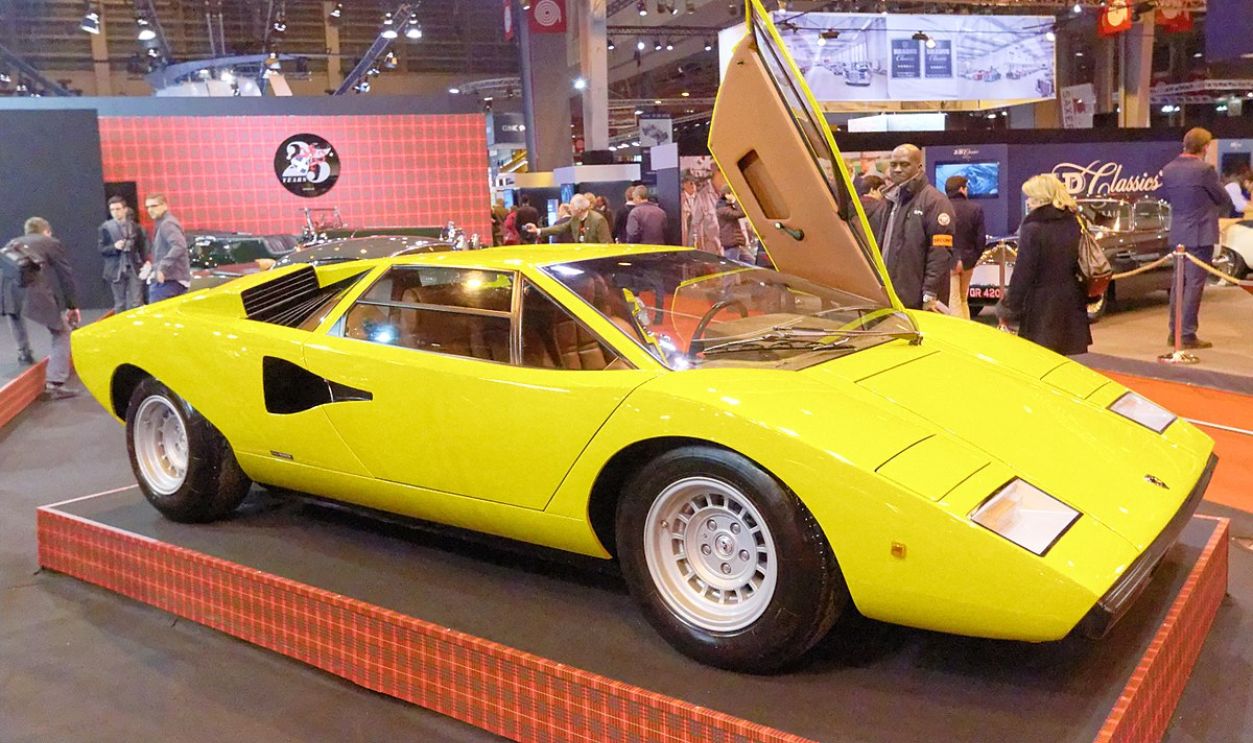 Thesupermat, CC BY-SA 4.0, Wikimedia Commons
Thesupermat, CC BY-SA 4.0, Wikimedia Commons
Ferrari 275 GTB/4
The Ferrari 275 GTB/4 was produced between 1964 and 1968 and is widely considered to be a direct competitor to the Lamborghini Miura. The two-door coupe was powered by a 3.9L V8 engine that produced 477 hp, with a top speed of 168 mph.
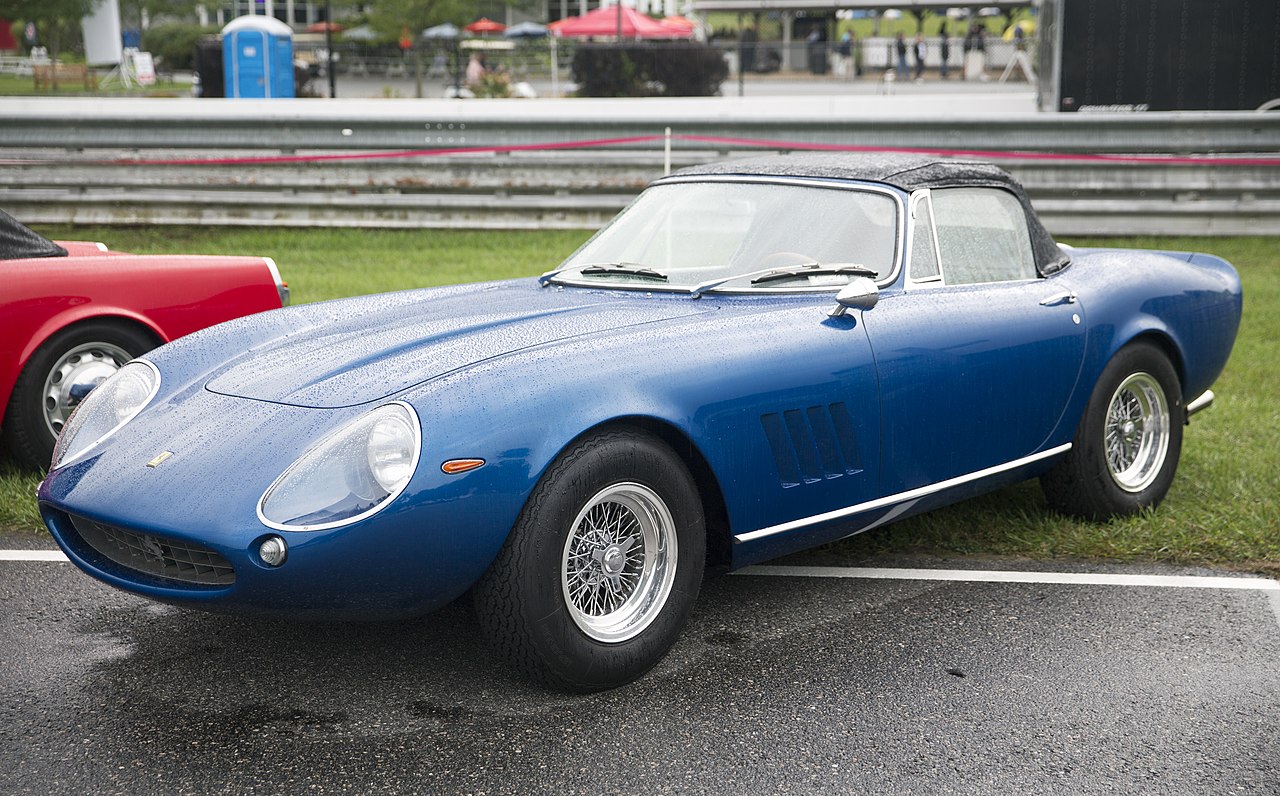 Mr.choppers, CC BY-SA 3.0, Wikimedia Commons
Mr.choppers, CC BY-SA 3.0, Wikimedia Commons
Lamborghini Gallardo
The Lamborghini Gallardo was the best-selling Lamborghini model, produced for 10 years between 2003 and 2013. 14,000 cars were built during its time on the market. Powered first by a 5.0L V10, then a 5.2L V10, the Gallardo's bright yellow coloring is classic Lamborghini and set it well apart from almost-always red Ferraris.
Ferrari Enzo
The Ferrari Enzo was produced between 2002 and 2004, as a direct competitor to the Lamborghini Gallardo, but with a limited production of 399 units over that two-year period. Its 6.0L V12 engine produced 651 hp through a six-speed manual transmission, borrowed from Formula One. An American magazine named it the third-best car of the 2000s.
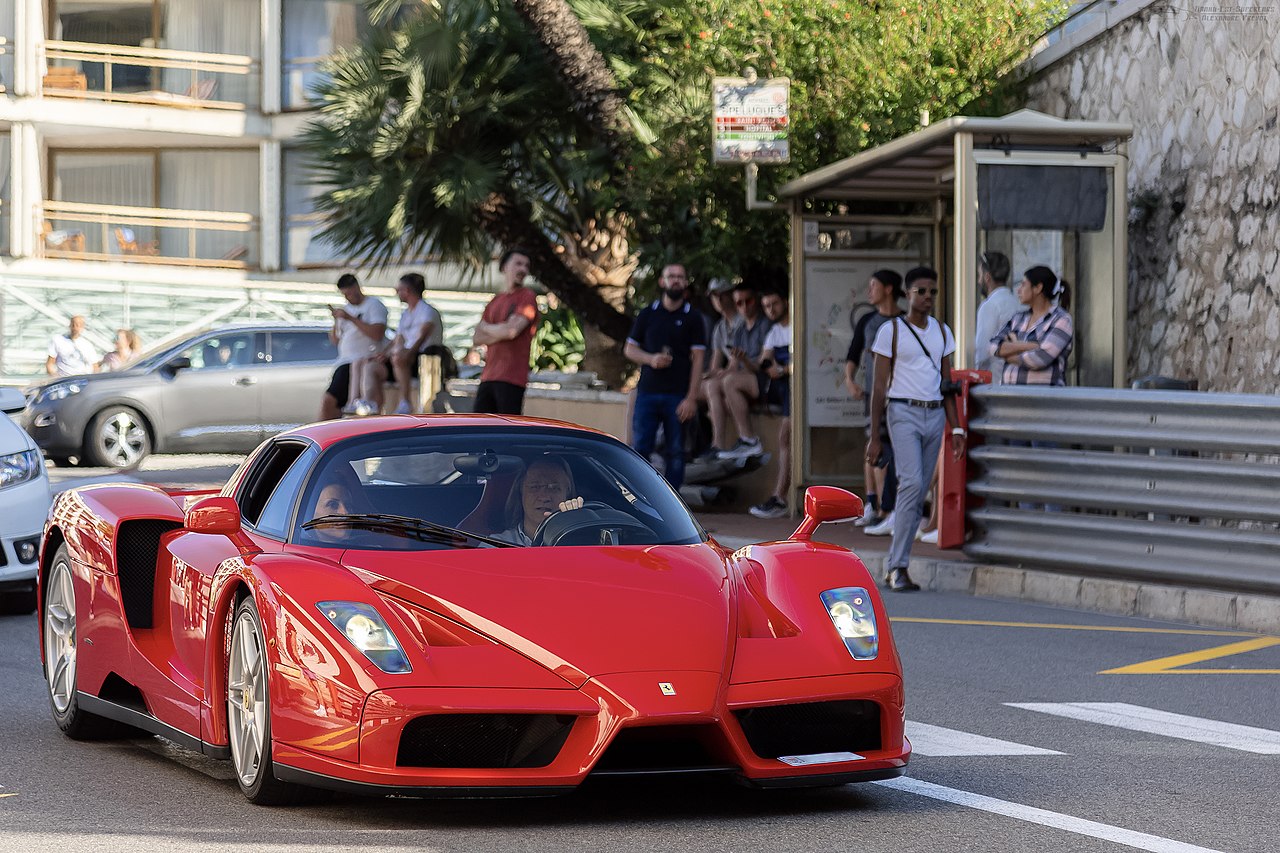 Alexandre Prevot, CC BY-SA 2.0, Wikimedia Commons
Alexandre Prevot, CC BY-SA 2.0, Wikimedia Commons
Summing Up A Rivalry
There's no doubt that both Enzo Ferrari and Ferruccio Lamborghini produced stunning cars. Works of art, you might say. Each for their own reasons, in their own right, were geniuses. Ferrari was older and more experienced and much more into racing than Lamborghini, whereas Lamborghini didn't appear to have the competitive streak for racing.
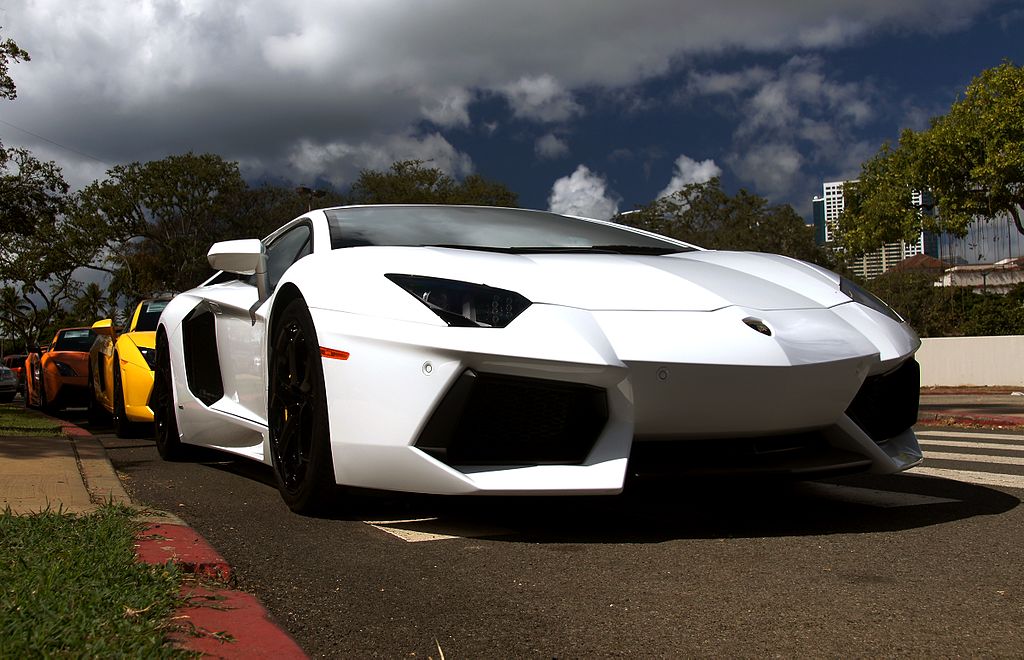 Bernard Spragg., Wikimedia Commons
Bernard Spragg., Wikimedia Commons
Enzo Ferrari Created His Own Rival
Perhaps if Enzo Ferrari had listened to Ferruccio Lamborghini's concerns, Lamborghini wouldn't have become Ferrari's main rival in Italy for the last six decades. It was Ferrari's dismissive tone and response to Lamborghini that pushed Ferruccio to begin creating road cars.
You May Also Like:
The Italian-Inspired Car Collection Of One Of The World's Youngest Billionaires
The Most Bizarre Celebrity Cars
Floyd Mayweather's Car Collection
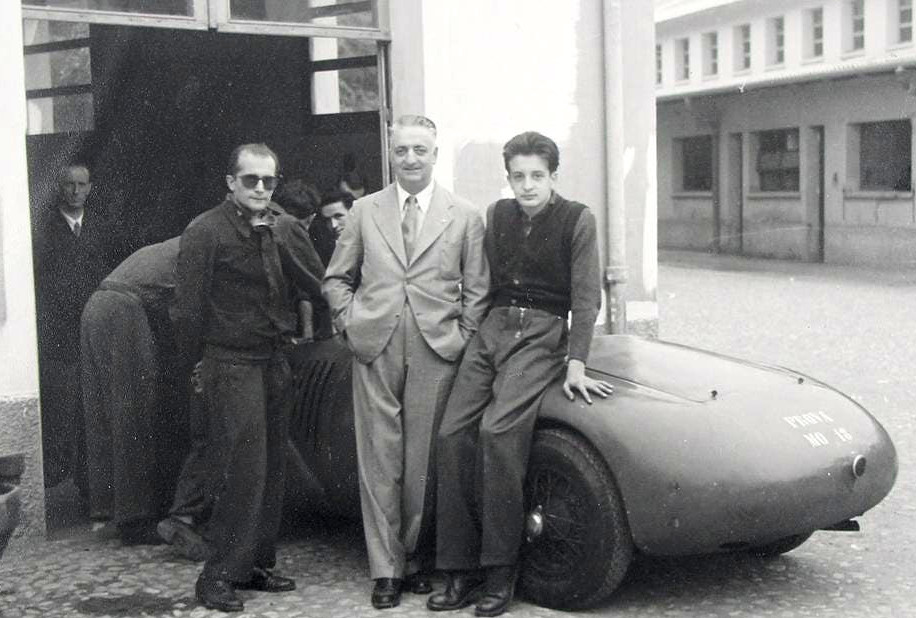 Unknown Author, Wikimedia Commons
Unknown Author, Wikimedia Commons
Sources:


